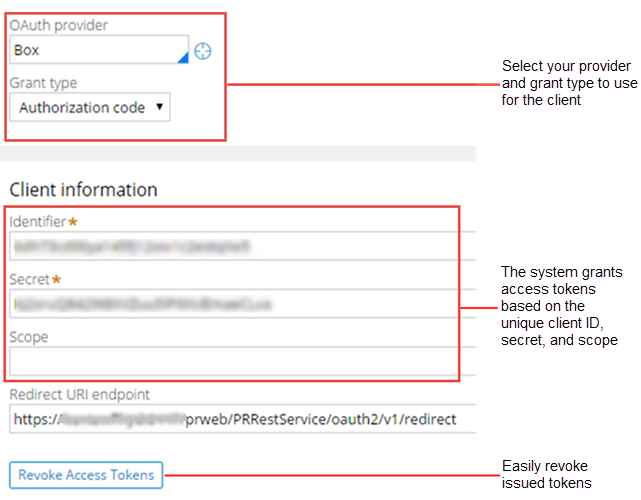Accessing protected API resources by using OAuth 2.0
Leading providers of services for social networking, messaging, file storage, media, health informatics, and the Internet of Things (IoT) publish their data through RESTful APIs that are often protected by the OAuth 2.0 protocol. The Pega 7 Platform acts as a consumer for these REST services and allows you to access OAuth 2.0-protected API resources. You can connect to leading OAuth 2.0 providers such as Box, Twitter, Facebook, and Google by using the authorization code or client credentials grant type.
Reference the OAuth 2.0 Provider data instance and enter the client information from the provider (for example, Box) in an authentication profile, as shown in the following figure:

Creating an authentication profile
Add an external web component section to a layout, a region, another section, or a cell in a layout to handle OAuth 2.0 provider authorization and authentication dialog boxes as shown in the following figures:

Adding an external web component section


Using the Information Mashup section at run time
